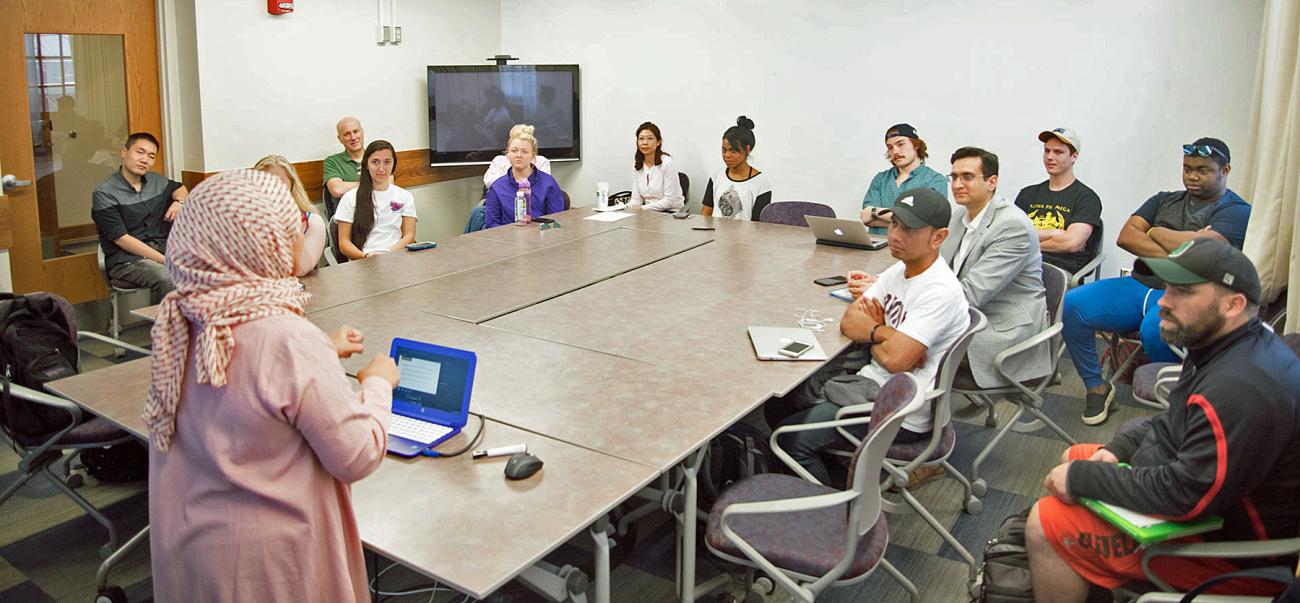SMART Lab Research
The rapid evolution of technology has generated vast, valuable data that, when harnessed and visualized, holds the power to address organizational challenges, enhance community service, and fortify brand relationships. Social media analytics spans diverse fields like health communication, politics, business, psychology, computer science, and journalism.
Uncovering hidden patterns and insights in online community behavior, we employ both qualitative and quantitative research methods to provide solutions for intricate organizational problems.
SMART Lab's interdisciplinary research clusters at Ohio University form collaborative spaces, bridging various disciplines for cutting-edge research. This synergy drives meaningful and inclusive research, brainstorming ideas, supporting ongoing projects, and organizing discussion sessions. The clusters focus on learning analytics, digital inequality and media literacies, media bias, and representations of minorities, as well as audience engagement for health, crisis, and sports. These endeavors are guided by Dr. Laeeq Khan, our lab director.
Selected Peer-Reviewed Publications
Khan, M. Laeeq, & Malik, A. (2022). Researching YouTube: Methods, Tools, and Analytics. In A. Quan-Haase & L. Sloan (Eds.), The Sage Handbook of Social Media Research Methods, (2nd Edition). Sage Publishing: Thousand Oaks, CA. ISBN: 9781529720969
Khan, M. Laeeq, Malik, A., Ruhi, U., Al-Busaidi, A., (2022). Conflicting attitudes: Analyzing social media data to understand early discourse on COVID-19 passports, Technology in Society, 68, 101830, https://doi.org/10.1016/j.techsoc.2021.101830.
Malik, A., Antonino, A., Khan, M. L., & Nieminen, M. (2021). Characterizing HIV discussions and engagement on Twitter. Health and Technology, 1-9. https://doi.org/10.1007/s12553-021-00577-z.
Malik, A., Khan, M. L., & Quan-Haase A., (2021). Public Health Agencies Outreach through Instagram during COVID-19 Pandemic: Crisis and Emergency Risk Communication Perspective, International Journal of Disaster Risk Reduction, 61, 102346, https://doi.org/10.1016/j.ijdrr.2021.102346.
Khan, M. Laeeq, Ittefaq, M., Pantoja, Y., Raziq, M., & Malik, A. (2021). Public Engagement Model to analyze digital diplomacy on Twitter: A social media analytics framework, International Journal of Communication, 15, 1741-1769, https://ijoc.org/index.php/ijoc/article/view/15698.
Otieno, A. W., Roark, J., Khan, M. Laeeq, Pant, S., Grijalva, M. J., & Titsworth, Scott, (2020). The kiss of death – Unearthing conversations surrounding Chagas disease on YouTube, Cogent Social Sciences, 7:1, 1858561, https://doi.org/10.1080/23311886.2020.1858561.
Khan, M. Laeeq (2020). Big Data and Entrepreneurship. In L. M. Mahoney & T. Tang (Eds.), Handbook of Media Management and Business (Volume 2, pp. 391-406). Rowman & Littlefield. ISBN-13 : 978-1538115305.
Khan, M. L., Welser, H. T., Cisneros, C., Manatong, G., & Idris, I. K. (2020). Digital inequality in the Appalachian Ohio: Understanding how demographics, internet access, and skills can shape vital information use (VIU). Telematics and Informatics, 101380. https://doi.org/10.1016/j.tele.2020.101380.
Khan, M. L., & Idris, I. K. (2019). Recognize Misinformation and Verify Before Sharing: A Reasoned Action and Information Literacy Perspective, Behavior & Information Technology, https://doi.org/10.1080/0144929X.2019.1578828.
Welser, T., Khan, M. L., & Dickard, M., (2019). Digital remediation: social support and online learning communities can help offset rural digital inequality, Information, Communication & Society. https://doi.org/10.1080/1369118X.2019.1566485.
Khan, M. L., Zaher, Z., & Gao, B. (2018). Communicating on Twitter for Charity: Understanding the Wall of Kindness Initiative in Afghanistan, Iran, and Pakistan. International Journal of Communication, 12, 25. http://ijoc.org/index.php/ijoc/article/view/7726.
Khan, M. L. (2017). Social Media Engagement: What Motivates User Participation and Consumption on YouTube? Computers in Human Behavior, 66, 236-247. https://doi.org/10.1016/j.chb.2016.09.024.
